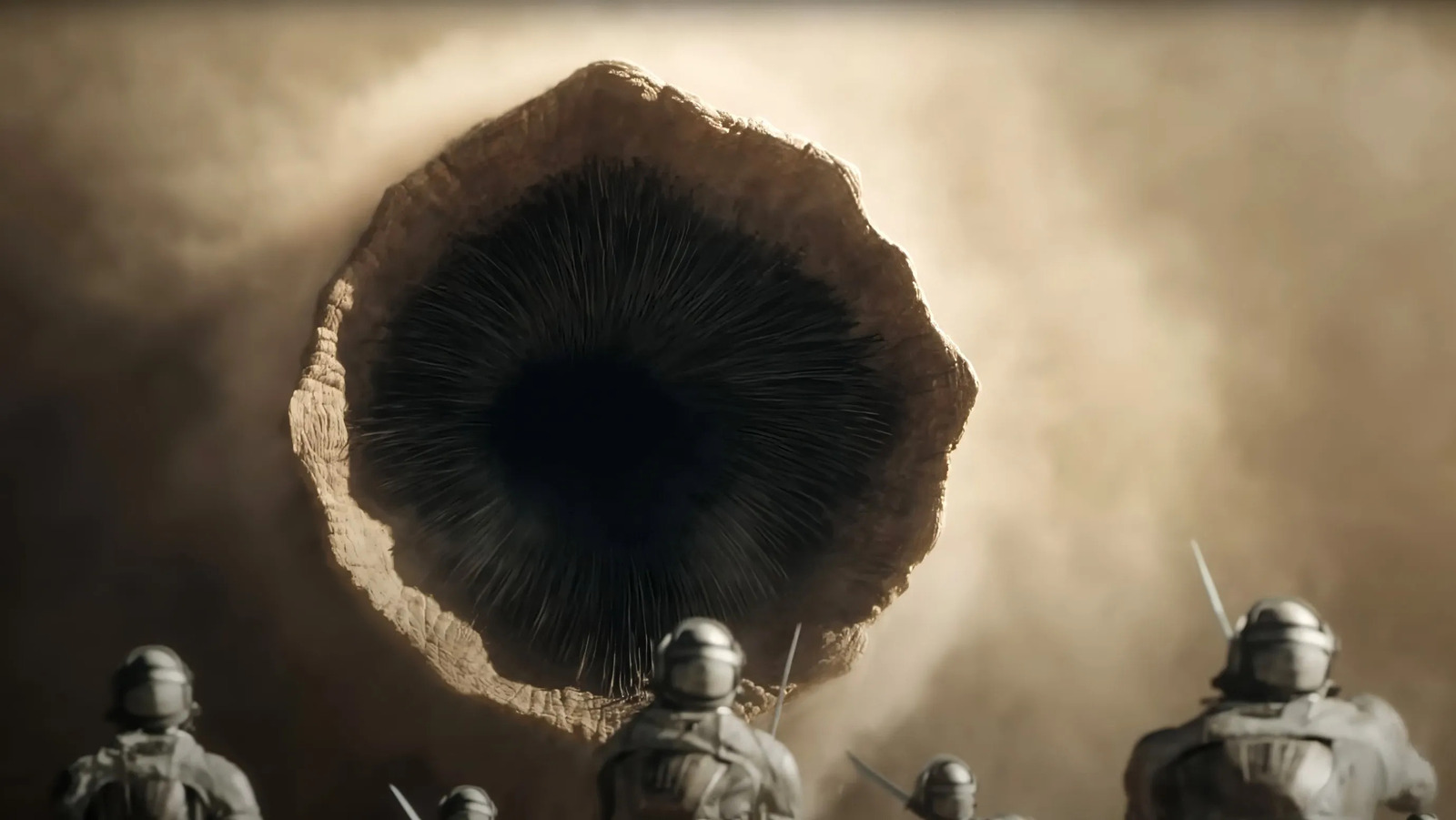The ecology of Arrakis is bizarre. It’s a desert planet that plays host to sparse flora and fauna, and in Frank Herbert’s original novel, Arrakis is described as hosting “saguaro, burro bush, date palm, sand verbena, evening primrose, barrel cactus, incense bush, smoke tree, creosote bush […] kit fox, desert hawk, [and] kangaroo mouse.” The sandworms, as Herbert explores in several “Dune” sequels, feed on sandplankton and their more mature form, sandtrout. It seems that sandtrout encyst water sources and eventually grow into the massive worms seen in the story. The sandworms essentially feed on themselves, giving birth to their own food source.
Some fans assume that the spice melange, found only on Arrakis, is actually worm poop, i.e. the spore left behind by a species that is essentially devouring itself. That theory is not confirmed by any texts. As far as we know, the worms digest and leave behind scat just like any animal. This is certainly the theory posited by Denis Villeneuve, a theory he hastily invented when pressed about the potentially eaten thumpers used by the Fremen:
“Yeah, it’s a thing you ask yourself. Is there something that they can find back there out of the digestive system of the worm? […] In ‘Part One’ we’re trying to avoid the sandworms as much as possible. In ‘Part Two,’ you see that the Fremen embrace this beast and use them as a way of traveling in the desert. I thought it was super poetic and I absolutely loved it. But yeah, it raises a question. I’m sure the Fremen thought about that.”
There are no scenes of Fremen digging through piles of worm poop like Laura Dern in “Jurassic Park,” but Villeneuve implied that’s exactly what’s happening when it comes to thumper retrieval.
